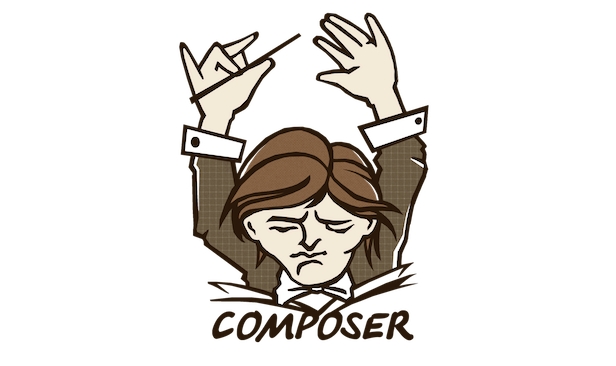How does Composer work with Laravel?
Composer is the backbone of dependency management in Laravel, handling installation, updating, and autoloading of required libraries. 1. It installs Laravel and its dependencies via composer.json, such as Symfony components and third-party packages like Laravel Sanctum or Spatie’s packages. 2. Key files include composer.json, which lists dependencies, autoload settings, and scripts, and composer.lock, which ensures consistent package versions across environments. 3. After cloning a project, running composer install installs exact versions from composer.lock, while composer update upgrades packages based on composer.json. 4. Laravel leverages Composer’s PSR-4 autoloading to automatically load classes under the App\ namespace, and running composer dump-autoload refreshes the autoloader when new classes are added. 5. Package auto-discovery uses Composer’s post-autoload-dump hook to automatically register service providers and facades, eliminating manual registration—for example, installing spatie/laravel-permission auto-registers its service provider. 6. Composer runs Laravel-specific scripts like php artisan package:discover after dependency updates to ensure proper package integration. 7. Common commands include composer install, composer require to add packages, composer update, composer remove to uninstall, and composer dump-autoload to regenerate the autoloader. Composer ensures Laravel applications maintain consistent, autoloaded, and properly integrated dependencies throughout development.

Composer is the backbone of dependency management in Laravel, and understanding how it works is key to building and maintaining Laravel applications effectively.

What Composer Does in Laravel
Composer is a PHP dependency manager that handles the installation, updating, and autoloading of libraries your Laravel project depends on. When you create or work on a Laravel app, Composer:
- Installs Laravel itself (via
laravel/installerorcreate-project) - Downloads all required packages listed in
composer.json(like Symfony components, Flysystem, Guzzle, etc.) - Manages third-party packages you add (e.g., Laravel Sanctum, Laravel Sail, or Spatie's packages)
- Generates an autoloader so you can use classes without manually including files
For example, when you run:

composer create-project laravel/laravel my-app
Composer fetches the latest Laravel release and all its dependencies based on the composer.json file defined by Laravel.
Key Files Involved
Two main files control how Composer works in Laravel:

composer.json: Lists your project’s dependencies, autoload settings, scripts, and metadata.require: Core packages needed to run Laravel (e.g.,illuminate/support,laravel/framework)require-dev: Development tools like PHPUnit, Laravel Pint, or Fakerautoload: Tells Composer how to load your application classes (especiallyApp\namespace)
composer.lock: A snapshot of the exact versions installed. This ensures everyone on your team uses the same package versions.
After cloning a Laravel project, you always run:
composer install
This reads composer.lock and installs the exact versions. Use composer update only when you want to update packages to newer versions per composer.json.
How Laravel Uses Composer Features
Autoloading Your Code
Laravel uses Composer’s PSR-4 autoloading to map theApp\namespace to theapp/directory. If you create a new class underapp/Models, Composer automatically makes it available everywhere:"autoload": { "psr-4": { "App\\": "app/" } }After adding new directories, run:
composer dump-autoload
…to refresh the autoloader without reinstalling packages.
Service Provider Discovery (Package Auto-Discovery)
Laravel uses Composer’spost-autoload-dumphook to scan packages forlaravelextra in theircomposer.json. This enables auto-discovery of service providers and facades. For example, when you install:composer require spatie/laravel-permission
Laravel automatically registers the service provider—no manual step needed.
Running Scripts
Composer can trigger Laravel-specific scripts after install/update. For instance:"scripts": { "post-autoload-dump": [ "Illuminate\\Foundation\\ComposerScripts::postAutoloadDump", "@php artisan package:discover --ansi" ] }This runs
php artisan package:discoverevery time you update dependencies, ensuring packages are properly registered.Common Composer Commands in Laravel
Here are the most-used Composer commands when working with Laravel:
-
composer install– Install dependencies fromcomposer.lock -
composer require vendor/package– Add a new package (e.g.,composer require guzzlehttp/guzzle) -
composer update– Update all packages to latest versions allowed bycomposer.json -
composer remove vendor/package– Uninstall a package -
composer dump-autoload– Regenerate the autoloader (useful after moving/renaming classes)
Basically, Composer keeps Laravel running smoothly by managing what your app needs, how it loads code, and how packages integrate. You don’t need to touch it deeply every day, but knowing how it ties into Laravel helps debug issues and add packages correctly.
The above is the detailed content of How does Composer work with Laravel?. For more information, please follow other related articles on the PHP Chinese website!
-

Hot AI Tools

Undress AI Tool
Undress images for free

Undresser.AI Undress
AI-powered app for creating realistic nude photos

AI Clothes Remover
Online AI tool for removing clothes from photos.

Clothoff.io
AI clothes remover

Video Face Swap
Swap faces in any video effortlessly with our completely free AI face swap tool!

Hot Article

Hot Tools

Notepad++7.3.1
Easy-to-use and free code editor

SublimeText3 Chinese version
Chinese version, very easy to use

Zend Studio 13.0.1
Powerful PHP integrated development environment

Dreamweaver CS6
Visual web development tools

SublimeText3 Mac version
God-level code editing software (SublimeText3)
 How to install Composer on Windows?
Jul 25, 2025 am 01:28 AM
How to install Composer on Windows?
Jul 25, 2025 am 01:28 AM
CheckPHPinstallationbyrunningphp-vinCommandPromptandensurePHPisinPATH.2.DownloadtheComposer-Setup.exeinstallerfromgetcomposer.org,runit,followthewizard,andallowsystem-wideinstallation.3.Verifyinstallationbyrunningcomposer--versioninanewCommandPromptt
 How do I clear the Composer cache? (composer clearcache)
Jul 19, 2025 am 04:38 AM
How do I clear the Composer cache? (composer clearcache)
Jul 19, 2025 am 04:38 AM
The Composerclearcache command is used to clear local cached data to solve the problem of outdated or dependency of package versions. Its core role is to delete stored package metadata, download archives, and Git cloning information. 1. It will not affect the vendor directory or composer.lock file; 2. Selectively clear specific cache types such as package files, repository metadata, VCS clones; 3. The cache location varies from system to system, and is located in ~/.composer/cache in Linux/macOS or AppData\Local\Composer for Windows; 4. If you use Docker or Homestead, you need to confirm whether it is executed in the correct environment; 5
 What is the composer.json file, and what is its purpose?
Jul 21, 2025 am 03:18 AM
What is the composer.json file, and what is its purpose?
Jul 21, 2025 am 03:18 AM
composer.json is a core configuration file required for using Composer in PHP projects, which is used to define dependencies, versions, automatic loading and other settings. It defines project information and requirements through key fields such as name, description, require, require-dev, autoload and scripts, and can be generated through composerinit or manually created or automatically updated through Composer commands such as composerrequire. This file ensures that team members use consistent libraries and versions, supports automatic loading mechanisms, simplifies dependency management and project sharing, and is the cornerstone of building maintainable and deployable PHP projects.
 How do I uninstall a package using Composer? (composer remove)
Jul 27, 2025 am 02:41 AM
How do I uninstall a package using Composer? (composer remove)
Jul 27, 2025 am 02:41 AM
Use the composerremove command to uninstall packages in PHP projects. This command removes the specified package from the composer.json's require or require-dev and automatically adjusts the dependencies. 1. Execute composerremovevevendor/package to remove from require; 2. Use the --dev parameter to remove from require-dev; 3. Composer will automatically update the dependencies and rebuild the automatic loader; 4. You can run composerinstall and check the vendor/directory to ensure thorough cleaning; 5. Finally submit version control changes to save the modification.
 How do I handle different PHP versions in different environments with Composer?
Jul 16, 2025 am 12:08 AM
How do I handle different PHP versions in different environments with Composer?
Jul 16, 2025 am 12:08 AM
TohandledifferentPHPversionsacrossenvironmentsusingComposer,settheplatformconfigtomatchyourtargetenvironment,lockdependenciesbasedonthelowestsupportedPHPversion,specifyrequiredextensionsexplicitly,andusealiasesforedgecases.First,configurethedesiredPH
 How do I use a VCS repository as a Composer package source?
Jul 21, 2025 am 03:59 AM
How do I use a VCS repository as a Composer package source?
Jul 21, 2025 am 03:59 AM
Yes,youcanuseaVCSrepositorylikeGitasaComposerpackagesourcebyfollowingthesesteps:1.Addtherepositoryincomposer.jsonbyspecifyingtheVCStypeandURL;2.Requirethepackagenormallyusingcomposerrequire;3.Usedevbranchesorspecificcommitsbyspecifyingthebranchnameor
 How do I install the dependencies listed in my composer.json file? (composer install)
Jul 16, 2025 am 01:34 AM
How do I install the dependencies listed in my composer.json file? (composer install)
Jul 16, 2025 am 01:34 AM
The most direct way to install dependencies is to run composerinstall. The specific steps are as follows: 1. Make sure that Composer is installed, and you can check the version through composer--version; 2. Enter the project root directory and execute composerinstall. This command will install dependencies based on composer.json and composer.lock, generate automatic loading configurations and store them in vendor/directory; 3. You can use --no-dev to skip development dependencies, -o optimization class loader, --prefer-dist priority download of zip files, etc. to enhance control; 4. If the installation fails, common reasons include incompatible PHP versions and lack of extensions
 What does composer audit check?
Aug 04, 2025 pm 01:02 PM
What does composer audit check?
Aug 04, 2025 pm 01:02 PM
Composer'sauditcommandchecksforsecurityvulnerabilitiesinPHPprojectdependenciesbyscanningthecomposer.lockfileagainstadatabaseofknownissues.1.Itidentifiesoutdatedorvulnerabledependencies,includingtransitiveones,reportingaffectedversionswithseverityleve







